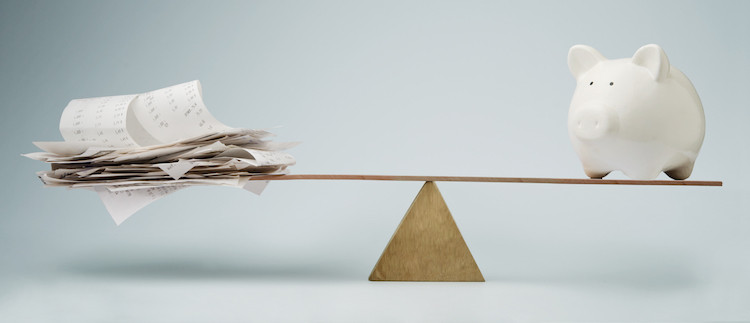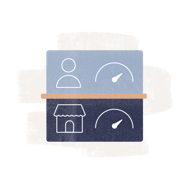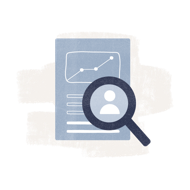After payment history, debt is the second most important factor in your credit reports. When most people think of debt in relation to their credit scores, they probably think in terms of how much they owe. But credit scoring models often look at it somewhat differently.
While the amount you owe is important, even more important is how you are managing your revolving accounts such as credit cards. Here, most credit scores will calculate something called a “debt usage” or “utilization” ratio. To do this, the balance on each of your credit cards or other revolving accounts will be compared to the credit limit on that account. In addition, an overall debt usage ratio will be calculated as well.
How Does Debt Usage/ Utilization Affect Credit Scores?
Let’s say you have a credit card with a $1000 credit limit and the balance that appears on your credit report is $500. You are using 50% of your available credit, and that means you have a 50% debt usage ratio. Now let’s say your balance is $200 instead. Your debt usage ratio is 20%.
Tip: Want to check your debt usage ratio? Sign up for a free account with Nav to get it along with monthly updates.
There is no hard and fast rule about what is a “good” ratio. It is just one of the factors in your credit scores, and the impact in part depends on all the other factors in your credit reports. But FICO does say that consumers with the highest credit scores tend to use less than 10% of their available credit. Credit scoring expert Barry Paperno, who worked at FICO for many years, says that if you keep your debt usage below 20 – 25% you should be OK for that factor.
But I Pay In Full!
Paying your balance off in full doesn’t necessarily guarantee a low debt usage ratio. Why not? Because in many cases a balance will be reported before, not after, you make a payment.
In the case of credit cards, for example, many issuers will report your balance at the end of the billing cycle, when they generate the statement. So let’s say your billing cycle for a credit card ends on January 20th. A few days later you get a statement telling you that you owe $495 and you have the option of paying that amount in full or making a minimum payment. Either way you have until February 19th to make your payment. Around that same time, it tells the credit reporting agencies (Equifax, Experian and TransUnion) that you owe $495. It doesn’t matter whether you pay that entire balance off by the due date or not; the balance has been reported and will be used to calculate your utilization.
That may not be a problem if you aren’t using your card heavily, but if you have a relatively low credit limit (say on a retail card or a secured credit card, for example) then a small balance could result in high utilization. Or if you use your credit card to pay for everything you can in order to earn rewards, you could end up with a very high ratio here.
One thing to keep in mind is that most business credit cards do not appear on an owner’s personal credit reports unless they fall behind on payments. (This article explains how the major business credit card issuers report to personal credit.) So a high balance on a business credit card may not impact your personal credit scores, though it could affect your business credit scores. That’s one of the reasons why it is good to have a business credit card that you use strictly for those types of purchases.
Business Credit Scores and Debt Usage
When it comes to your business credit scores, debt may be evaluated differently. For one thing, not all debts appear on all business credit reports. So it’s possible a lender may report to one agency and not another, or may not report at all unless the account is delinquent.
With the D&B Paydex score, payment history is the driver, not debt levels. With other models, debt is a factor, but utilization on revolving accounts is probably not going to have the same impact. (In part, that’s because often the majority of accounts that report are not considered revolving accounts.) However, with scoring models that look at both the owner’s personal credit and business credit information, utilization is a major factor for the personal credit score, and does come into play when the overall score is calculated.
That doesn’t mean debt is overlooked. Experian Small Business Reports, for example, contain fields for the Total Balance Amount (all balances added together) and Recent High Credit (highest balance in the past twelve months with a particular lender or vendor). And some credit managers will still use some form of manual underwriting or custom underwriting, and may look at business debts levels, rather than primarily at utilization.
The rule of thumb, then, should be to carefully monitor your debt usage ratios on your personal credit reports. On the business side, keep debt levels manageable and your score should be fine for this factor.
This article was originally written on December 8, 2015 and updated on November 20, 2019.



I like to say, your small business advice is great. It helps people to be aware of one errors, these alerts helps one correct their bad habits from not paying on time to paying on time.. Fermin
This makes me wonder what the optimal mix of credit cards, credit limits, and throughout-the-month balances. Perhaps you eventually cross a threshold where it doesn’t matter very much – but I’m curious what that threshold is :).
Hey Rich, I’d say the optimal mix of credit cards depends on how you use your cards. In terms of throughout-the-month balances, as Gerri mentioned above, FICO says that consumers with the highest credit scores tend to use less than 10% of their available credit. It’s could be worthwhile to find out when your credit card issuers report your payments and pay your balance down before that day!